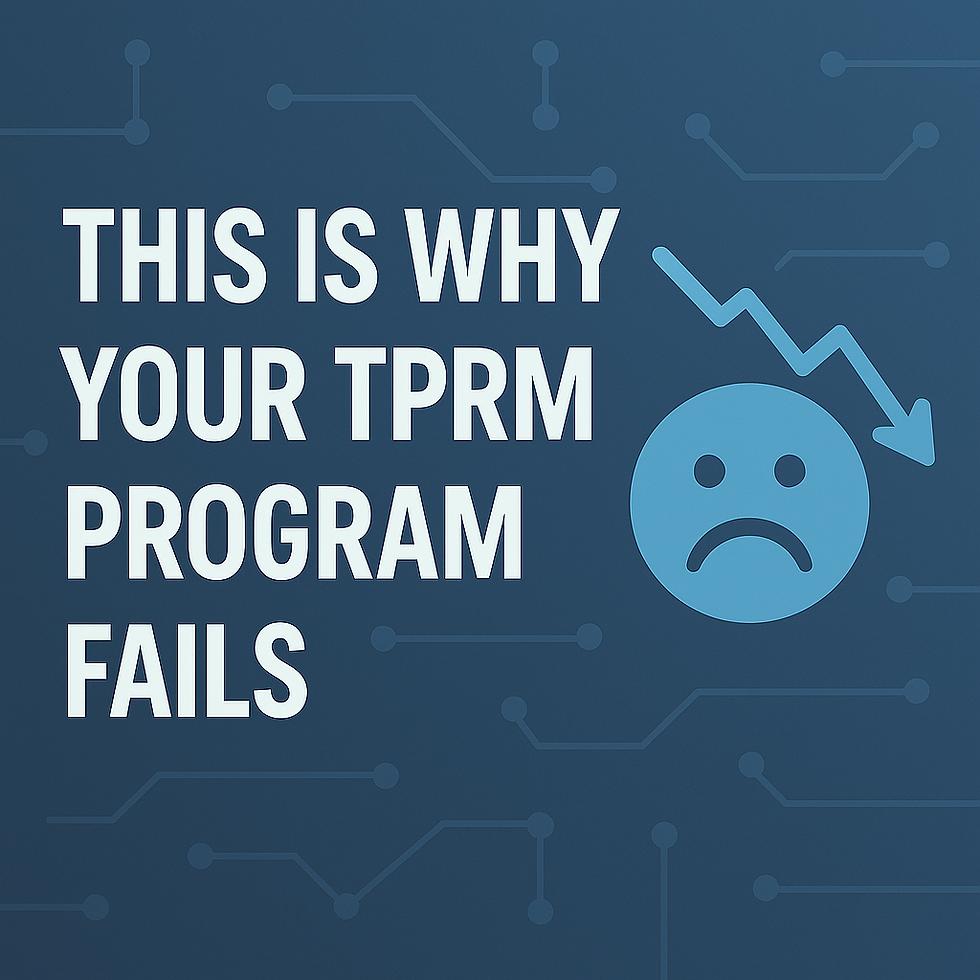This Is Why Your TPRM (Third-party Risk Management) Program Fails
- Corina
- Apr 27
- 3 min read
Updated: Jul 27
Most third-party risk management (TPRM) programs are built with good intentions. Clear policies. Templates. Checklists. Intake forms. On paper, everything looks like it should work. But why it doesn't seem to work?

In reality, vendors bypass the process. Reviews get stuck for weeks. Privacy risks get missed. And everyone blames everyone else when something goes wrong.
It is not because vendors are tricky. It is because internal employees are the real weak link. The people inside your organization are the ones who skip intake. Push vendors through without a review. Forget to involve privacy and security early. Ignore risk warnings because the business timeline feels more important.
Most TPRM programs fail because they are built to control vendors but they do not control internal behavior.
First, there is no clear ownership. Ask around and you will hear it. Procurement says it is privacy’s job. Privacy says it is InfoSec. InfoSec says it is legal. Legal says it is everyone else.
Meanwhile, the business just wants the vendor approved as fast as possible. Without clear ownership, your TPRM program becomes a loose set of tasks that nobody really leads. When a tough decision comes up, no one wants to be the one who says no. And without leadership, even the best policies end up ignored.
Second, intake is broken. Different teams have different systems. No one agrees on when privacy or security needs to get involved. Employees do not even know where to start. So vendors get signed before the review happens. Privacy and security find out too late. And the organization scrambles after the fact to fix issues that could have been caught at the beginning. If your intake is not clear, centralized, and automatic, you do not have a real TPRM process. You have a reaction plan.
Third, there is no real stakeholder engagement. Publishing a policy does not mean people will follow it. Business owners care about speed. Legal cares about liability. Security cares about technical control. Privacy cares about lawful processing. Procurement cares about contract flow. If you do not engage each group in a way that makes sense for them, they will either push back or work around you. TPRM cannot be built in a silo. It only works if the people inside the business see it as a tool that protects them, not just another box to check.
And fourth, there is no executive sponsorship. When tough calls come, like rejecting a vendor that business leadership wants, you will need someone senior to back you. Without C-level support, your policies are just suggestions. Getting buy-in at the top is not optional. It is what turns TPRM from a process into part of the organization's risk strategy.
Privacy risk cannot be stapled on at the end of the vendor process. And vendors are not the ones driving risk into your organization. Your own employees are. Sometimes without even realizing it.
If you want your TPRM program to work, fix the real problems first. Assign real ownership. Build a clean, obvious intake process. Train and engage the people inside your organization. Get real executive backing. Everything else flows from there.
Skip these, and it will not matter how many templates, certifications, or checklists you have. Your program will still fail.
I am writing more about this in my upcoming book on privacy-focused third-party risk management.
If you have run into these issues, or if you are trying to fix your own TPRM process, I would love to hear what challenges you are facing. Drop a comment or message me. I am always learning from what others are seeing on the ground.




Comments